Performance Cruiser Part 1: Six fast cruising yachts compete against each other
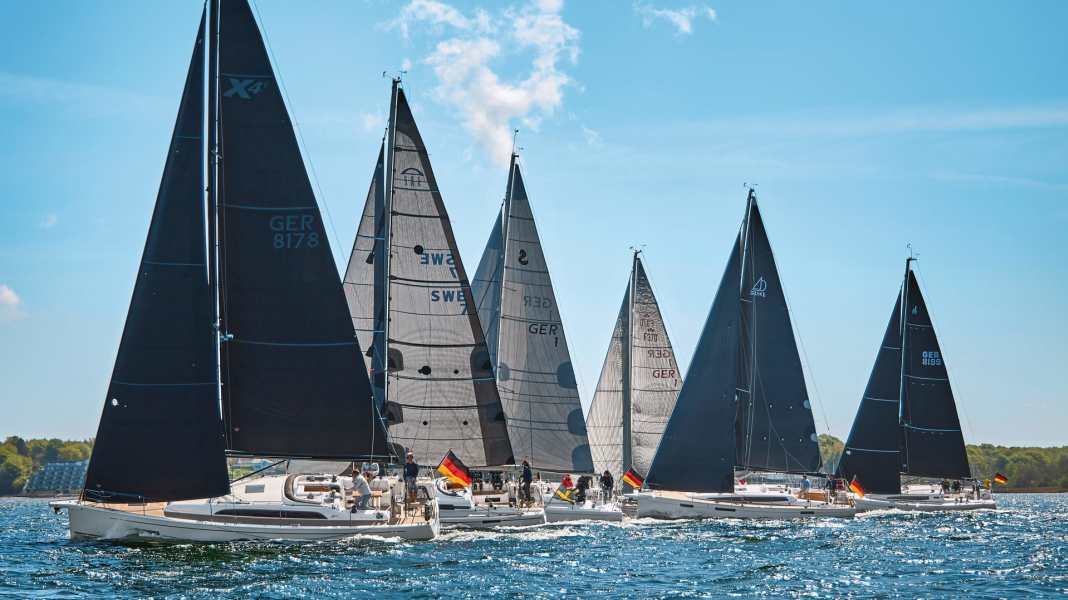
In the test:
- Arcona 385
- Dehler 38 SQ
- Faurby 370
- First 36 from Beneteau
- J 112 E
- X 4.0
All parts of the performance cruiser comparison
Active, sporty sailing and comfortable cruising do not necessarily have to be mutually exclusive. There are overlaps, and the overlaps between the two sought-after orientations are becoming larger and the compromises more attractive. An increasingly diverse leisure society demands new crossover concepts. Boats with unrestricted touring and family suitability on the one hand and high-performance sailing characteristics on the other are in demand. A young, polysportive clientele also wants to be able to sail regattas - actively, ambitiously and, if possible, successfully.
The topic of performance cruising is of course by no means new, but is currently experiencing a strong boom again. Modern boat concepts with increasingly voluminous hulls are fuelling this development, as the compromises to be made between sport and comfort are becoming smaller and more acceptable. The performance cruiser class can also benefit from increasingly simple rigging concepts as well as clear and functional cockpit layouts. If you want to sail actively and sportily, you no longer necessarily have to have many years of experience and a great deal of skill in the sport. Thanks to their easy handling, the boats are simple and can be mastered by a small, even inexperienced crew. Full crew strength is no longer absolutely necessary.
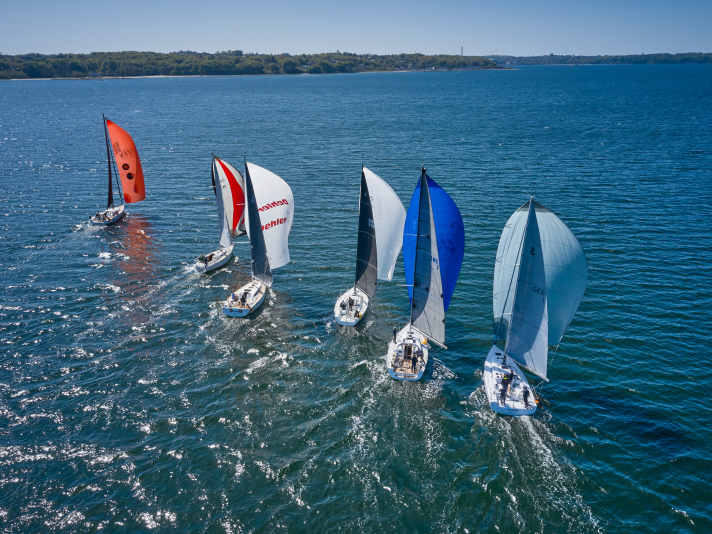
So there are plenty of good reasons to pay a lot of attention to the current performance cruiser class. As part of the annual group tests, the YACHT test crew therefore decided to invite the representatives of the currently very good and attractive class around eleven metres hull length to the Flensburg Fjord for a comparative test. In the end, six strong competitors from four countries answered the call, covering the class spectrum very well and representing the rest.
Performance cruisers are the trend, the compromises are getting smaller and smaller
The Arcona 385 from Sweden was recently presented as a complete refit of the 380 (test YACHT 20/2014). In addition to visual changes on and below deck, the ship has also been given a new, open stern as part of the upgrade. As the Arcona 380, Stefan Qviberg's design has achieved numerous regatta successes, especially in its native Sweden, including a brilliant overall victory in the long-distance classic "Tjörn Runt" in 2020 in a field of over 200 participating yachts.
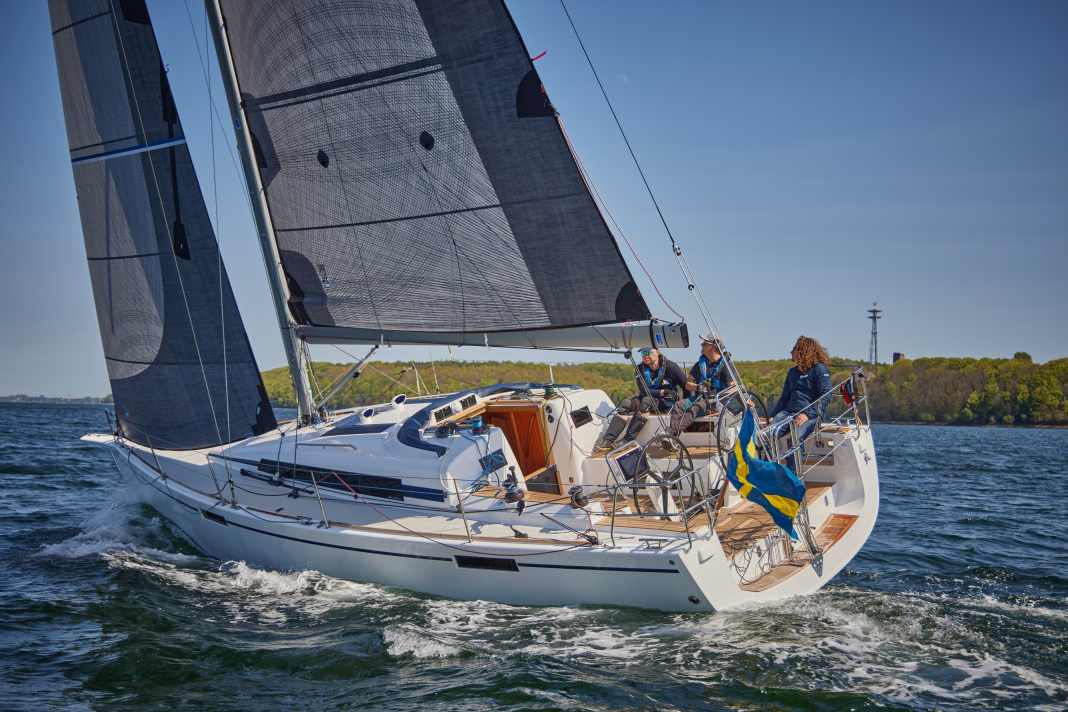





The Dehler 38 SQ comes from Germany for comparison. The suffix SQ stands for "Speed and Quality" and defines an extensive revision of the previous Dehler 38 model, which was honoured as Europe's Yacht of the Year in 2013. With the upgrade and a new rig concept, the design from Judel/Vrolijk & Co has become even sportier and offers incrementally more performance in attractive equipment packages (test YACHT 13/2021).
The Faurby 370 from Denmark also comes in a modified version. Its hull is based on the Faurby 363 (YACHT 12/2014 test), but has been raised by around five centimetres with the 2020 facelift to provide more headroom below deck. The deck, rigging and hull appendages remain unchanged. However, with its beautiful, sleek lines by Lars T. and Steen Olsen, the Faurby 370 visibly stands out from the competition in terms of design.
The most recent boat in the comparison group, the First 36 from Beneteau in France, is a stark contrast to the classic Faurby concept. The hull lines by designer Sam Manuard represent the latest developments in modern yacht building. The extremely wide stern and the strikingly voluminous front compensate for this. The First 36 (test YACHT 9/2022) is the only boat in the comparison with two rudder blades. Like the smaller current models in the sporty First series from industry leader Beneteau, the new 36 is also built under licence by the Seascape shipyard in Slovenia.
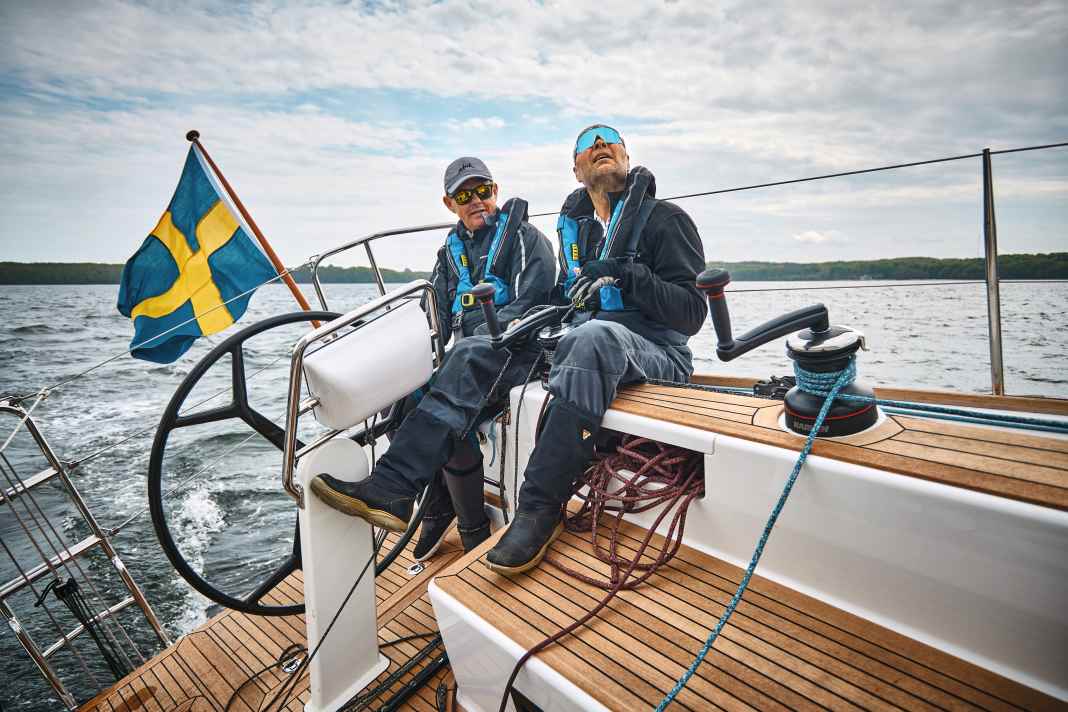





The J 112 E was launched in 2016 as a new development and successor to the highly successful J 109. Like the First 36, the boat built by J Composites in France with American roots is conceptually more on the sporty and performance-orientated side. Living comfort and touring suitability are undoubtedly important, but not a priority. As is usual with J/Boats, the J 112 E was also designed by shipyard boss and in-house designer Alain Johnstone. The rather slender stern, the low freeboard and the pronounced deck moulding reflect his typical signature. The test of the J 112 E can be found in YACHT, issue 20/2016.
The X 4.0 from X-Yachts in Denmark (YACHT 18/2019 test) only comes last alphabetically. With its type designation, it pretends to be a 40-footer. In reality, however, she is only just a 38-footer with a hull length of 11.50 metres, but still the largest boat in the comparison. The hull lines by designer Niels Jeppesen are moderate, with no polarising or excessively radical design features. Instead, the straightforward, pragmatic design language dominates. Visually, the X 4.0 is a particularly beautiful ship, a real eye-catcher.
As different as the boats are: Their performance level is surprisingly homogeneous
The comparative tests took place over three days on the Flensburg Fjord in ideal conditions, with winds of around 10 to 15 knots, and occasionally more with gusts of around 20 knots. After several comparative runs, a fairly clear picture emerged. Downwind, the modern First 36 shows an outstanding performance. The Frenchwoman is visibly faster than her competitors, planing with her huge gennaker from 4 to 5 Beaufort and conjuring up speeds of around 15 knots on the log in the gusts. The First 36 benefits above all from its low weight. Ready to sail, she weighs just 4.8 tonnes, making her lighter by far than her competitors.
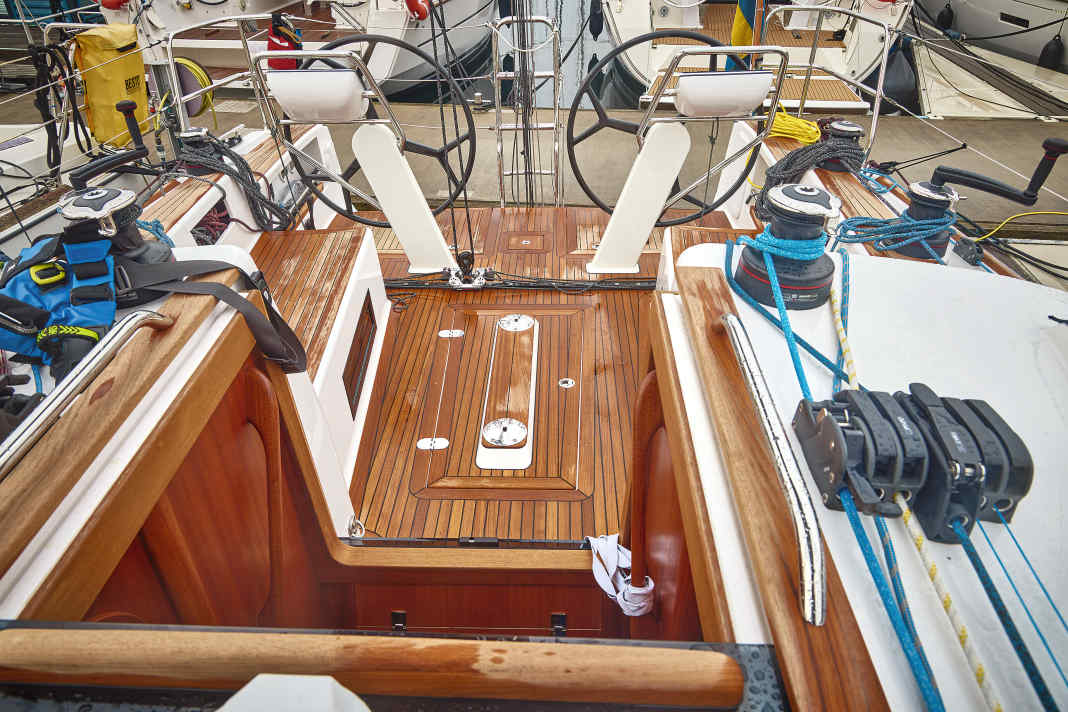





Meanwhile, the Faurby 370, with its slim hull, falls behind on the space wind course. In addition, the test boat, construction number one, is equipped with a gennaker that is clearly too small and cut too flat, which means that the boat's potential cannot be fully realised on the deep space wind course. The Dane has to admit defeat in the wind.
The cards are reshuffled on the cross. The Arcona 385 from Sweden shows a strong performance with a high rig, deep keel and good sails and is able to pull slightly ahead over the long distance, although the speed differences within the group are generally not very great. After the losses on the downwind leg, the Faurby 370 in particular is surprisingly strong upwind and can almost keep up with the pace dictated by the Arcona 385 at times, especially when the wind drops a little in between.
In comparison, the X 4.0 and the Dehler 38 SQ seem to be able to run at a better height than the rest of the field. However, all competitors show an almost identical level of performance in this respect. The J 122 E benefits from its long (1.85 metres) and extendable bowsprit made of carbon fibre, which means that a larger gennaker can be used more efficiently. However, the French-built American cannot match the outstanding performance of the First 36.
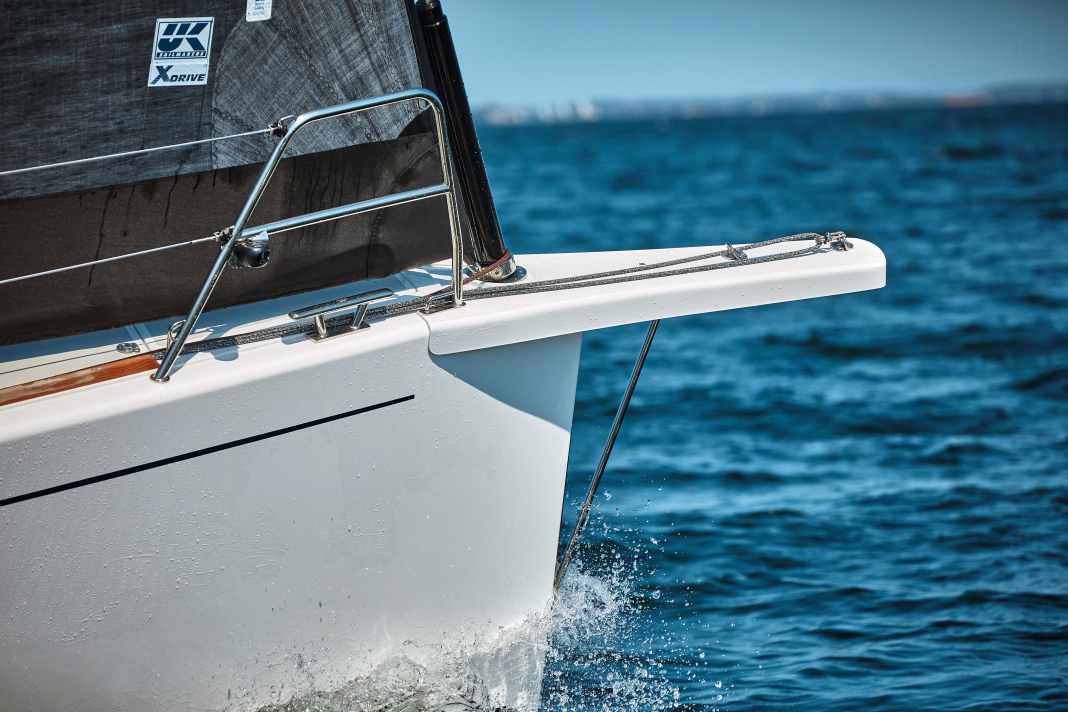





More important and relevant than the findings from the mere performance comparison are the perceived sailing characteristics of the test boats. The differences are greater and more perceptible. The Arcona 385 sails visibly stiff and generally does not heel much. She seems to convert gusts into speed more easily than her competitors, who tend to respond to sudden pushes with more leeway. The Swede is also very balanced on the rudder and can easily be held on the wind edge with little pressure on the double wheels. This makes it easy for the helmsman to steer the boat optimally. However, the steering on the test boat is deliberately set with a lot of slip by the Arcona shipyard. The play on the wheel is uncomfortable and takes some getting used to, and the system feels spongy.
The Dehler 38 SQ is very nice and direct to steer, and its performance potential can be called up pleasingly quickly. With a little rudder pressure, it also provides the helmsman with pleasant and easy-to-implement feedback. And: the boat reacts very quickly to the rudder and is lively, even when manoeuvring. Nevertheless, the Dehler also feels very good-natured and forgives steering errors and inattentiveness.
In a direct comparison, the First 36 behaves much more delicate upwind. The steering system with the double, but smaller rudder blades is set very neutrally, there is hardly any rudder pressure, which is common for boats of this type and orientation. However, this makes it more difficult to steer the boat optimally in the wind and requires the helmsman's undivided attention to the boat. More work and course correction is required on the wheel than with competitor boats. On the other hand, the sporty Frenchwoman offers a real explosion of pleasure under gennaker - especially for the helmsman. With her two rudder blades, she can be steered with a quick response to pressure in order to easily parry the poisonous gusts and many turns on the Flensburg Fjord. If you steer actively, you can relieve the gennaker trimmer of most of the work on the downwind leg. This is not only a lot of fun, but is also an important argument, especially when sailing with a small crew.
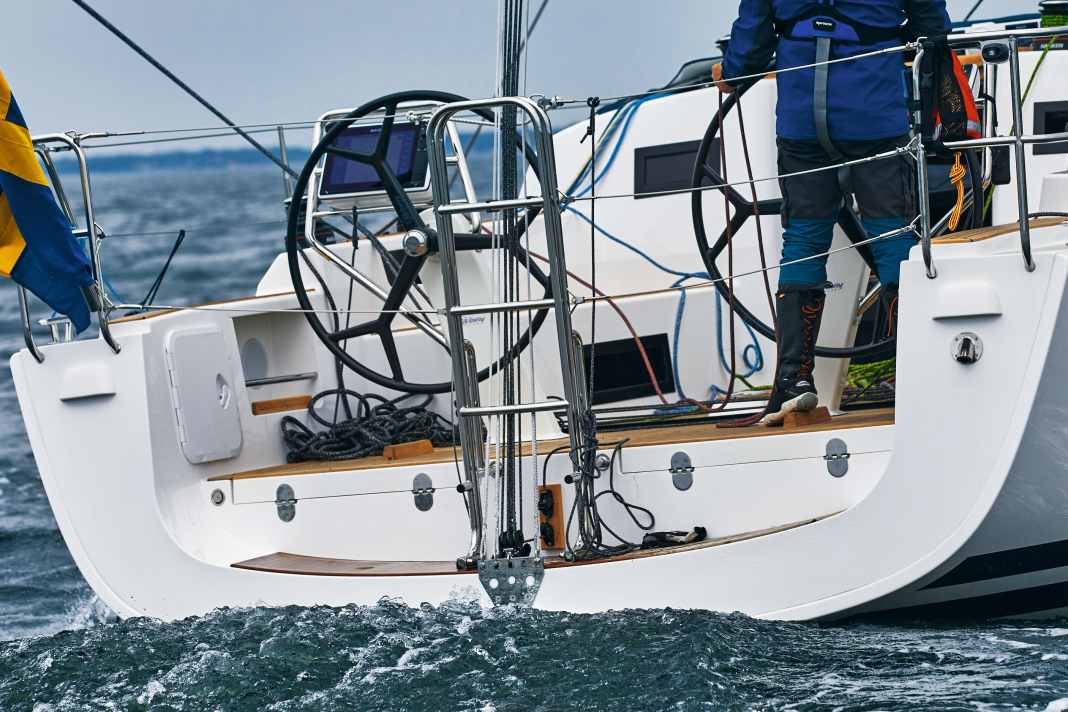





If you switch directly from the modern First 36 to the more classic Faurby 370, you will immediately experience the design change of generation. Unlike the nervous First, the boat from Denmark sails very stably and with great directional stability. And: the slim Faurby moves almost silently through the water downwind, leaving hardly any turbulence in the stern water. It feels a bit like the sophisticated solidity that you might recognise from sailing with classic boats. The Faurby is the only boat in the comparison to come with tiller steering. The Danish boat can be steered precisely and very sensitively along the wind edge with balanced rudder pressure. However, under gennaker and especially in gusts, the tiller on the Faurby tends to break out to one side abruptly if you don't hold the steering bar firmly and firmly.
Opinions are divided on mainsheet systems. There are advantages and disadvantages
The J 112 E occupies a special position with its huge steering wheel (1.50 metres in diameter). The large wheels on performance boats have generally gone out of fashion in favour of double steering columns - unfortunately, as the French-built American can once again confirm in a direct comparison. The rudder handling is marvellous. Thanks to the sheer lever, the steering can be adjusted extremely directly and very sensitively; the large wheel doesn't even need a whole turn from stop to stop. Even the slightest movement on the controls leads to an immediate change of course, which requires the helmsman to concentrate.
On the X 4.0 there is a little more rudder pressure than on the competition, both upwind and with a gennaker, which is not necessarily detrimental to performance or steering behaviour, but can be a little more tiring for the helmsman in the long run. The X's high weight is also noticeable. With a ready-to-sail load of 8.1 tonnes, it is the heaviest boat in the comparison group. This makes the Danish boat feel a little more sluggish, especially on the beam. The pounds on the X 4.0 are no accident. The proportion of ballast in the T-keel (3.1 tonnes, 38 percent) is higher on her than on the competitors (except Faurby with 39 percent) and is also efficiently positioned as a lead torpedo on the deep T-keel. This gives the X 4.0 a noticeably stiff sail, which ultimately also results in a very good height upwind.
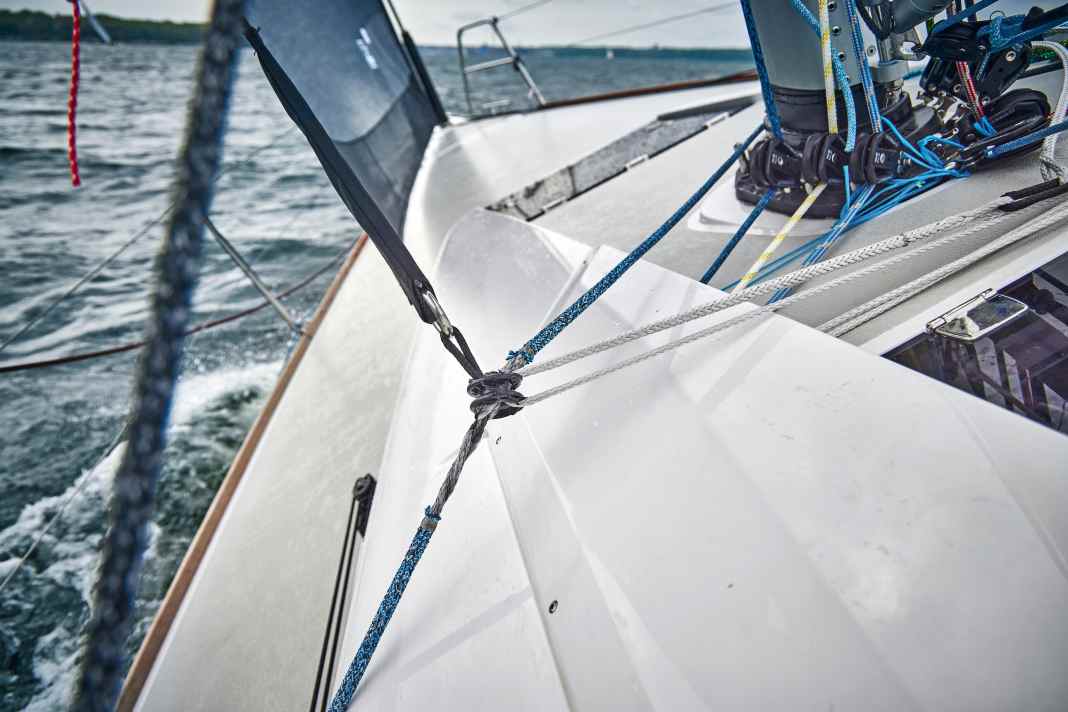





Essentially, the test boats have a fairly standardised cockpit layout in functional terms. This means: primary and secondary sheet winches for the genoa (forward) and mainsheet (aft) on the side or behind the cockpit coaming, additional winches to the side of the companionway for halyards, trim and reefing lines, plus a full-length traveller on the aft cockpit floor in front of the steering columns. This is the usual and tried-and-tested arrangement for medium-sized performance cruisers. The Faurby 370 is an exception: in the standard version with tiller steering, the mainsail is trimmed using a bulkhead jib with fine adjustment, which is quick and easy. However, the Dane is also available with wheel steering on request. In this case, the mainsheet is also steered via the rear sheet winches on the coaming. The Faurby also has a classic, narrow cockpit with long thwarts and a deep cockpit. On the other competitor boats, the cockpit remains open at the rear. For the X 4.0 and the Dehler 38 SQ, large bathing hatches are also available to close off the stern. This is a sensible option for cruising.
Dehler and Arcona equip their boats with a so-called German-Cupper mainsheet system as standard. The sheet is guided along the main boom to the mast and from there back over deck to the cockpit on the rear winches. Although these systems are easy to operate and impress with their smooth running, they also require very long sheet paths with inevitable stretching, which makes fine and retrimming the sheet more difficult, depending of course on the quality of the sheet material.
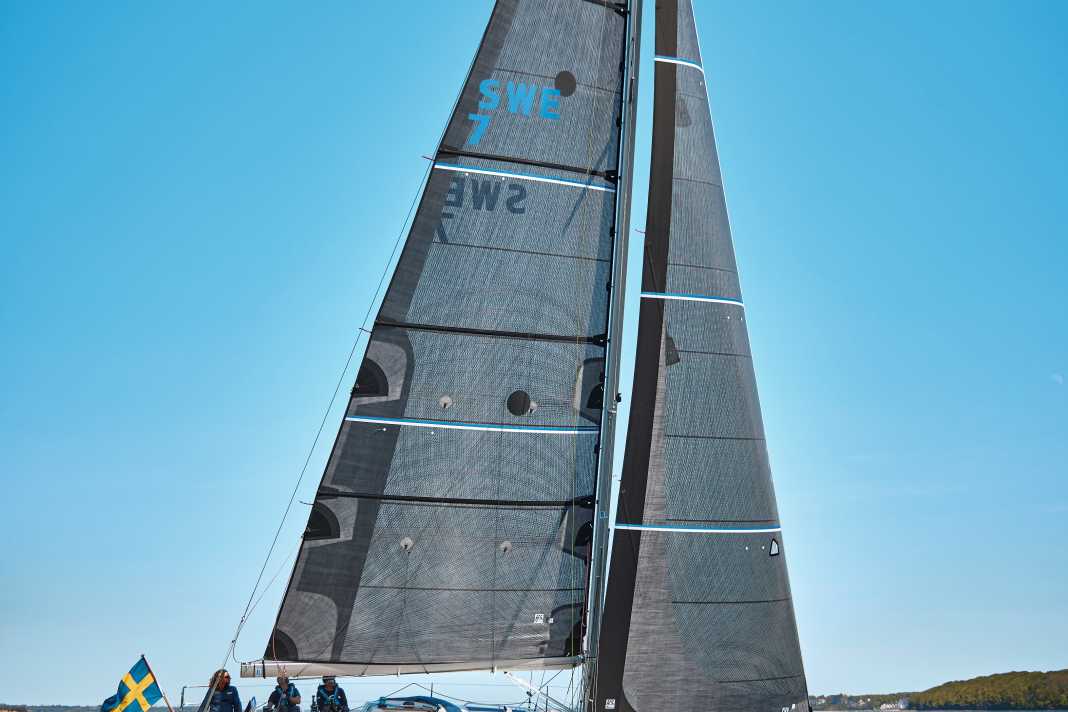





The mainsheet systems can be trimmed more accurately and efficiently if they are redirected from the traveller with a 2:1 ratio directly to the side winches. In general, these systems are on the rise again as a good alternative to the German Cupper system. In the comparison group, they have been implemented on the newer models such as the First 36, the J 112 E and the X 4.0. However, the sheet has to be deflected several times over small angles on the short path from the traveller to the winch, which increases friction. In addition, if there is a lot of pull on the mainsheet, the sheet trolley on all three boats snags because the entire mainsheet system has to be moved at the same time as the traveller function.
The J 112 E and the First 36 are perfect for ambitious regatta sailors who like to sail actively and trim a lot. On both boats, the helmsman and mainsheet trimmer sit side by side, comfortable, relaxed and with plenty of room to manoeuvre and a good grip. What's more, they have all the relevant trimming and adjustment options (mainsheet, backstay, traveller) within easy reach and can work efficiently. These two boats also fulfil the requirements of sailors who are increasingly sailing single or double-handed. The steering wheels are mounted at a distance from the side deck so that the helmsman can easily slide forwards.
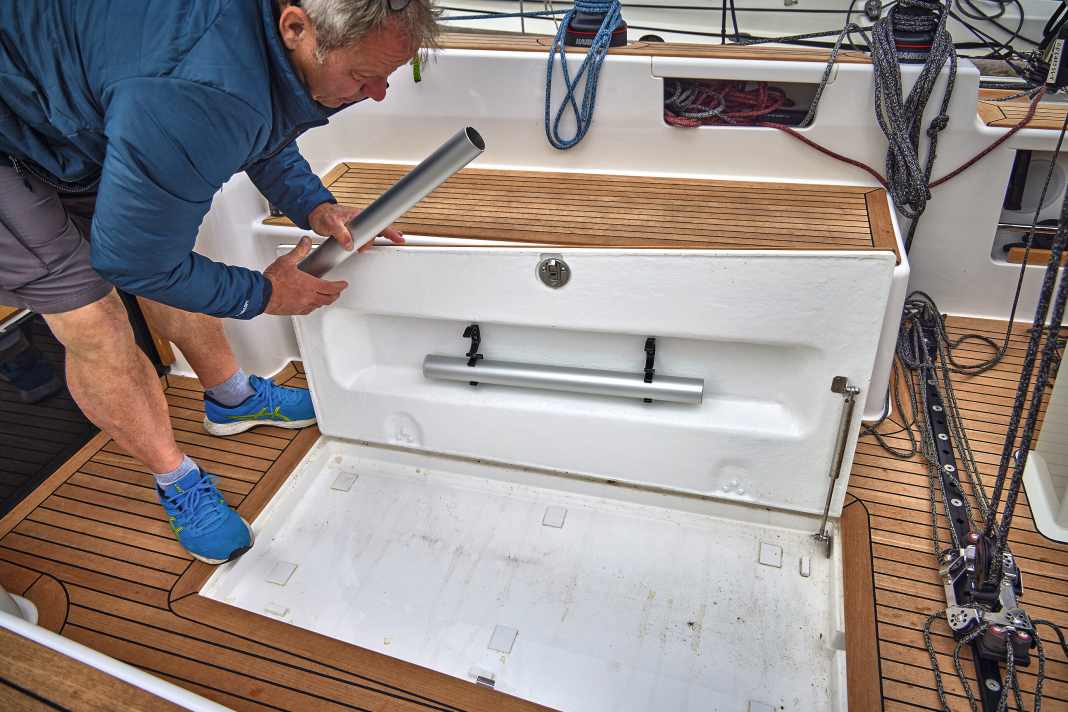





The disadvantage on the J 112 E: The large single wheel is relatively far away from the helmsman's sitting position, forcing him to constantly lean inwards without much room for relaxation. This can be exhausting on long trips. For the First 36, the French have found a better solution by raising the two helm stations and thus positioning the wheels higher up. This may look strange at first glance, but it really helps. However, the two high steering columns are quite wobbly and are not suitable for holding on to in swell.
Not all ships offer the same relaxed and comfortable seating on board
On the Arcona, X-Yachts and Dehler boats, the cockpit coaming is pulled further back, right in front of the steering columns. This means that the mainsheet winches are always within easy reach of the helmsman, even if he is blocked behind the outboard wheels. On the Dehler 38 SQ in particular, the crew sits comfortably on the high side with their buttocks above the round, outward-sloping coaming and can operate the mainsheet winch from here.
The seating position for the crew on the J 112 E is also relaxed on board due to the rather flat cockpit coaming, and here too the winches remain within easy reach. The coamings of the rest of the competition are significantly higher and more angular in shape. Sitting high up on board for long periods of time is tiring and exhausting, even when the boat is heeled. It's a good idea to take a seat on the cockpit thwarts from time to time or, even better, sit on the high edge with your legs outwards, as you would do during a regatta anyway.
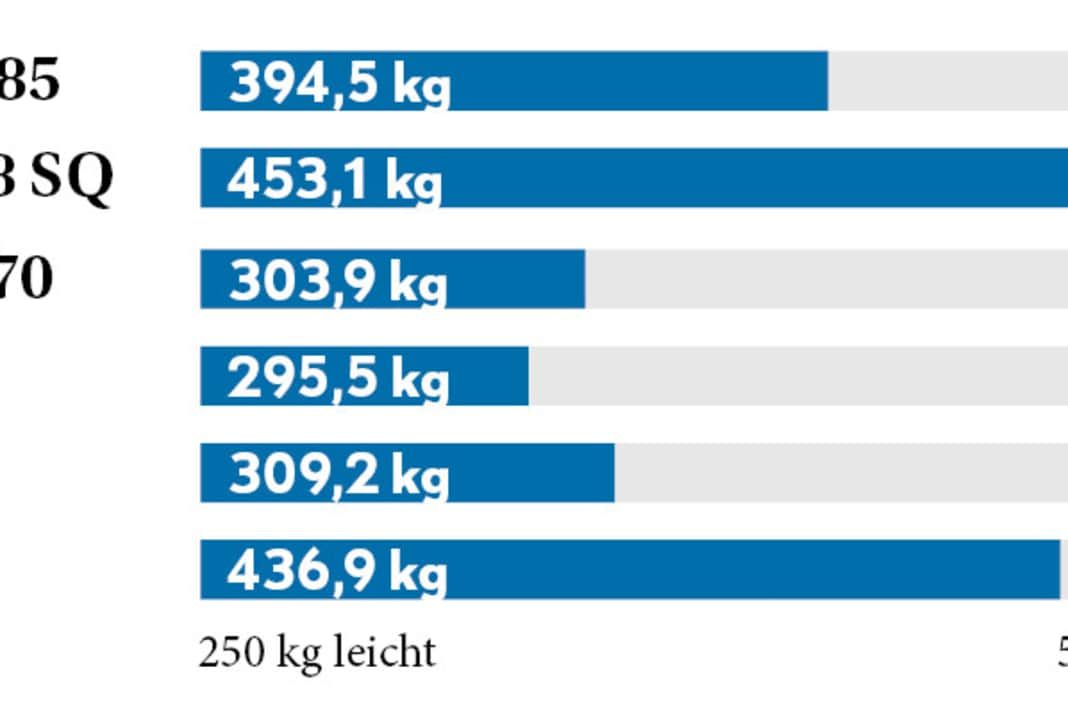





As far as the operation of the primary winches for the genoa sheet is concerned, the First 36 takes all the points that can be awarded. Thanks to the enormous width aft and the wide cockpit cut-out at the back, the genoa trimmer can stand directly behind the winch and crank ergonomically efficiently at a good height and with a view of the sail to be adjusted. To further improve this ergonomics, the shipyard has also fitted the winch at a slight angle. Well done! However, this only works on the Frenchwoman if the optional storage boxes in the cockpit are not installed. The boxes may be an advantage when travelling with the family, but for sporty sailing they are more in the way than useful. It's just as well that they can be removed with a flick of the wrist and left ashore.
Conclusion after part 1 of the group test: all six comparison yachts have their merits under sail, with advantages and disadvantages in balance. That's why none of the protagonists has a clear advantage going into the second round, where the next issue will focus on comfort and living. One thing is clear: it remains exciting!
Data and prices in detail
Arcona 385
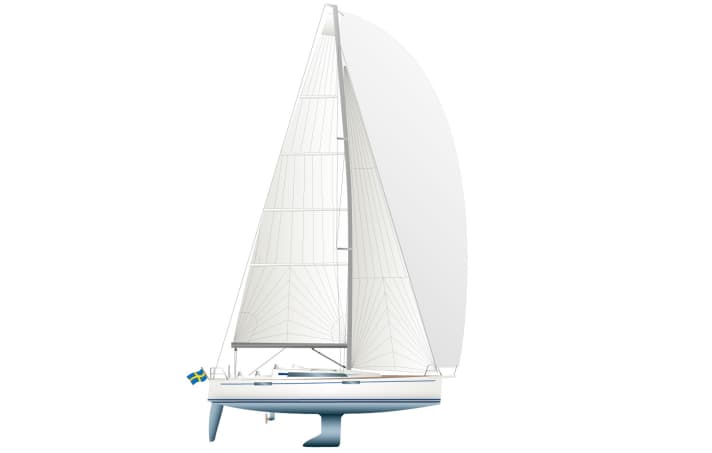
- Technical data
- CE design category A
- Hull length 11.28 m
- Total length 12.00 m
- Waterline length 10.60 m
- Width 3.80 m
- Draught/altern. 2,10/1,90/2,25 m
- Mast height above WL 19.50 m
- Theoretical hull speed 7.9 knots
- Weight 6.8 tonnes
- Ballast/proportion 2.4 t/35 %
- Mainsail 52.0 m²
- Furling genoa (107 %) 36.0 m²
- Engine (Yanmar) 21 kW/29 hp
- Fuel tank (stainless steel) 135 litres
- Fresh water tank (stainless steel) 200 l
- Holding tank (stainless steel) 70 litres
- Equipment and prices
- Base price ex shipyard € 342,510
- Price ready to sail € 367,680
- Comfort price € 408,270
- Warranty/against osmosis 2/2 years
- Shipyard
- Arcona Yachts AG, 13440 Gustavsberg (Sweden); www.arconayachts.se
- Distribution
- AP Yachting, 24235 Laboe (Germany); www.apyachting.de
- YACHT rating
- Beautiful and sporty yacht from Sweden. Strong sailing performance, especially upwind. Top basic equipment
- Design and concept
- + High variance
- + Good cockpit layout
- - Tiring working positions
- Sailing performance and trim
- + Stiff and fast in the wind
- + Very balanced control
- + Fast reactions
Dehler 38 SQ
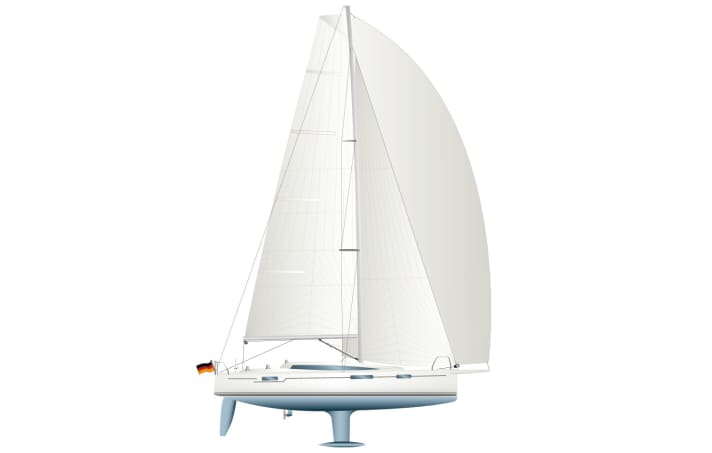
- Technical data
- CE design category A
- Hull length 11.30 m
- Total length 12.07 m
- Waterline length 10.40 m
- Width 3.75 m
- Draught/altern. 2,04/2,24/1,60 m
- Mast height above WL 17.70 m
- Theoretical hull speed 7.8 knots
- Weight 7.5 tonnes
- Ballast/proportion 2.4 t/32 %
- Mainsail 42.8 m²
- Furling genoa (105 %) 35.1 m²
- Engine (Yanmar) 21 kW/29 hp
- Fuel tank (PVC) 160 litres
- Fresh water tank (PVC) 295 litres
- Holding tank (PVC) 35 litres
- Equipment and prices
- Base price ex shipyard € 254,540
- Price ready to sail € 259,440
- Comfort price € 283,780
- Warranty/against osmosis 2/5 years
- Shipyard
- HanseYachts AG, 17493 Greifswald (Germany) www.dehler.com
- Distribution
- Hanse (Deutschland) Vertriebs GmbH; dealer network www.hanseyachtsvertrieb.de
- YACHT rating
- Attractive performance cruiser from high-volume production. Straightforward and no-frills concept
- Design and concept
- + Moderate construction
- + Large bathing platform possible
- + Comfortable sitting upright
- Sailing performance and trim
- + Competitive services
- + Control with a lot of feeling
- - Traveller quite sluggish
Faurby 370
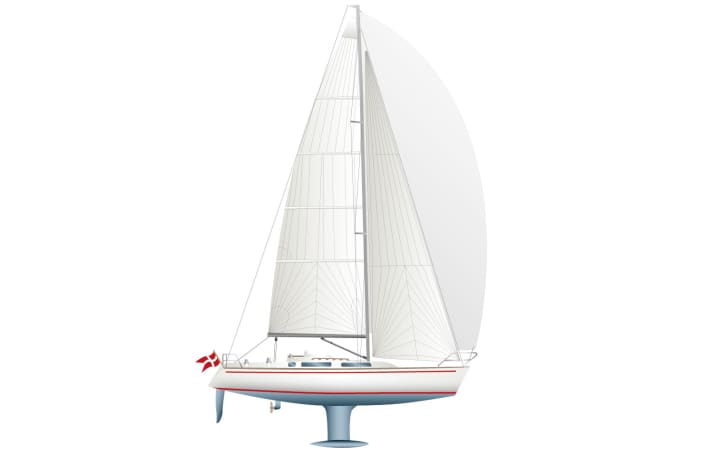
- Technical data
- CE design category A
- Hull length 11.27 m
- Total length 11.27 m
- Waterline length 9.70 m
- Width 3.30 m
- Draught/alternative 1.85/div.
- Mast height above WL 16.00 m
- Theoretical hull speed 7.6 kn
- Weight 5.6 tonnes
- Ballast/proportion 2.2 t/39 %
- Mainsail 34.5 m²
- Furling genoa (105 %) 27.0 m²
- Engine (Volvo Penta) 13 kW/19 hp
- Fuel tank (PVC) 64 litres
- Fresh water tank (PVC) 110 litres
- Holding tank (PVC) 65 litres
- Equipment and prices
- Base price ex shipyard € 331,620
- Price ready to sail € 331,620
- Comfort price € 356,400
- Warranty/against osmosis 2/2 years
- Shipyard
- Faurby Yacht, 6640 Lunderskov (Denmark); www.faurby.dk
- Distribution
- Direct sales
- YACHT rating
- The classic in the test group. The slim design is surprisingly strong in the wind
- Design and concept
- + Slim, beautiful lines
- + Highly customisable
- - Little space in the cockpit
- Sailing performance and trim
- + Direct steering with tiller
- + Simple handling
- + Good one-handed suitability
First 36
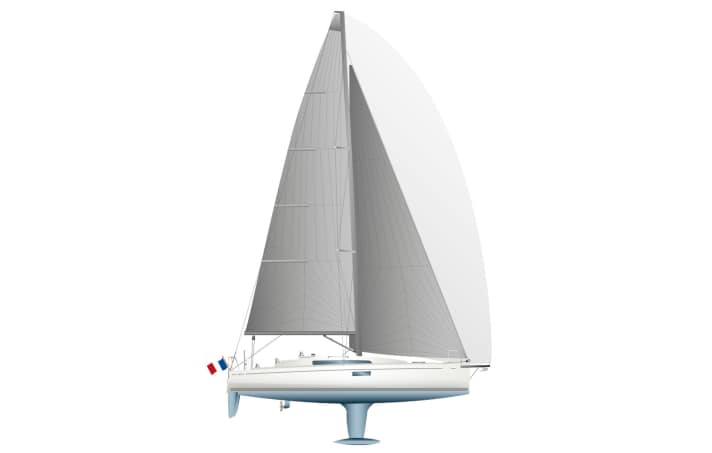
- Technical data
- CE design category A
- Hull length 11.00 m
- Total length 11.98 m
- Waterline length 10.66 m
- Width 3.80 m
- Draught/alternative 2.25/1.90 m
- Mast height above WL 17.80 m
- Theoretical hull speed 7.9 knots
- Weight 4.8 tonnes
- Ballast/proportion 1.5 t/32 %
- Mainsail 39.0 m²
- Furling genoa (110 %) 36.0 m²
- Engine (Yanmar) 21 kW/29 hp
- Fuel tank (PVC) 70 litres
- Fresh water tanks (PVC) 2x 100 litres
- Holding tank (PVC) 50 litres
- Equipment and prices
- Base price ex shipyard € 259,180
- Price ready to sail € 288,210
- Comfort price € 317,230
- Guarantee/against osmosis 7/7 years
- Shipyard
- Beneteau/Seascape, 85800 Saint-Gilles-Croix-de-Vie (FRA) www.beneteau.com
- Distribution
- www.oleu-watersports.de ; www.enjoy-yachting.de
- YACHT rating
- Modern construction with many good details. The performance potential is impressive, especially on the downwind side
- Design and concept
- + Contemporary design
- + Consistent lightweight construction
- + Regatta-clear equipment
- Sailing performance and trim
- + Potential easily accessible
- + Especially downwind fast
- - Little steering feel
J 112 E
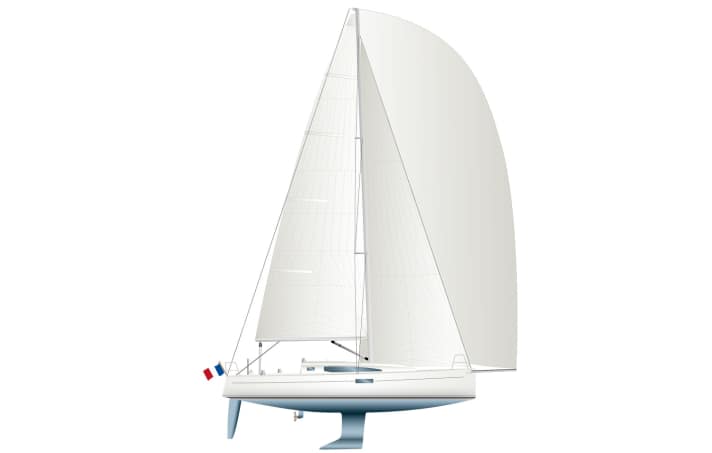
- Technical data
- CE design category A
- Hull length 10.98 m
- Total length 11.00 m
- Waterline length 9.68 m
- Width 3.58 m
- Draught/altern. 2,10/1,75/2,25 m
- Mast height above WL 17.32 m
- Theoretical hull speed 7.6 knots
- Weight 5.1 tonnes
- Ballast/proportion 1.7 t/33 %
- Mainsail 38.0 m²
- Furling genoa (103 %) 32.8 m²
- Engine (Volvo P.) 21 kW/28 hp
- Fuel tank (stainless steel) 85 litres
- Fresh water tank (PVC) 200 litres
- Holding tank (PVC) 45 litres
- Equipment and prices
- Base price ex shipyard € 256,800
- Price ready to sail € 276,420
- Comfort price € 309,630
- Guarantee/against osmosis 2/10 years
- Shipyard
- J Composites, 85109 Les Sables-d'Olonne (France) www.jcomposites.eu
- Distribution
- Mittelmann's Werft, 24376 Kappeln (Germany) www.mittelmannswerft.de
- YACHT rating
- Attractive concept with a strong focus on maximum sailing performance. The large steering wheel is rare and good
- Design and concept
- + Uncompromising sportiness
- + Elegant hull lines
- - Little flexibility at the wheel
- Sailing performance and trim
- + Well-balanced control
- + Perfect cockpit layout
- + High-quality deck equipment
X 4.0
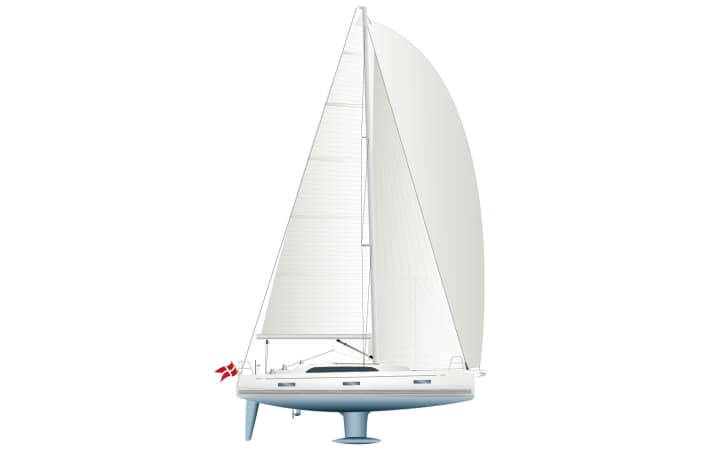
- Technical data
- CE design category A
- Hull length 11.50 m
- Total length 12.09 m
- Waterline length 10.40 m
- Width 3.81 m
- Draught/altern. 2,10/2,40/1,85 m
- Mast height above WL 18.90 m
- Theoretical hull speed 7.8 knots
- Weight 8.1 tonnes
- Ballast/proportion 3.1 t/38 %
- Mainsail 47.0 m²
- Self-tacking jib 31.0 m²
- Engine (Yanmar) 29 kW/40 hp
- Fuel tank (aluminium) 180 l
- Fresh water tanks (PVC) 245 litres
- Holding tank (PVC) 40 litres
- Equipment and prices
- Base price ex shipyard € 366,405
- Price ready to sail € 397,555
- Comfort price € 436,115
- Warranty/against osmosis 2/5 years
- Shipyard
- X-Yachts, 6100 Haderslev (Denmark); www.x-yachts.com
- Distribution
- X-Yachts Germany, 24944 Flensburg (Germany); www.x-yachts.de
- YACHT rating
- Harmonious combination of sportiness and high comfort. Many well thought-out, well-designed details on deck
- Design and concept
- + Balanced concept
- + Moderate hull lines
- + Clearly structured cockpit
- Sailing performance and trim
- + Strong on all courses
- + Good equipment ex shipyard
- - Relatively high rudder pressure
All parts of the performance cruiser comparison

